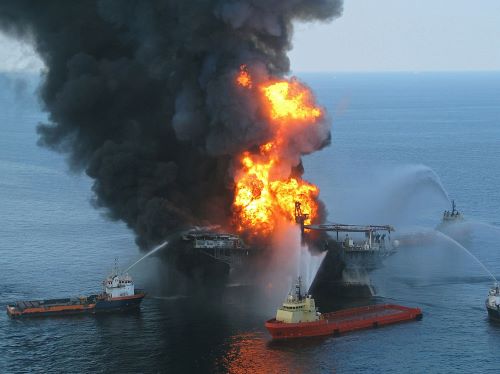

Oil is big business in Texas and there’s no shortage of rigs in the Gulf Coast. For oil rig workers, the pay is great and so are the benefits. The downsides include long stretches away from home and potentially hazardous working conditions.
Accidents on oil rigs do occur and usually result in injuries. If you’re injured in an oil rig accident, the claim process can be a nightmare. We’ll look at oil rig accident claims and legal advice you may need to help ensure you receive compensation for your damages.
Types of Offshore Accidents Covered by Injury Claims in Texas
Texas currently has laws in place identifying the types of offshore accidents that are covered by injury claims. These laws are in place to help ensure workers receive fair compensation for any injuries and other damages resulting from an oil rig accident. These include but aren’t limited to the following:
- Boat collisions: This includes if a crew boat crashes or a barge slams into the rig’s legs. Injuries from capsizing or sinking boats are also often covered.
- Falls from platforms If an oil rig worker falls from a platform due to slippery surfaces, missing safety rails, or open hatches, their injuries are typically covered.
- Equipment failures: Oil rigs must have properly functioning equipment that includes all tools, slings, pulleys, and cranes.
- Falling heavy objects: Items can fall from cranes striking workers below.
- Explosions and fires: Blowouts, engine backfires, and gas ignition can result in severe burns and blast injuries.
- Chemical explosions: Vapors from toxic fumes and drilling fluids can cause severe respiratory illnesses.
Another injury covered by insurance is overexertion. Hernias and back issues are common with oil rig workers due to the heavy lifting they perform almost daily.
Damages You May Be Able to Recover After an Oil Rig Accident
You’re probably wondering what damages you can claim if you’re injured on an oil rig. The list is extensive but you may not qualify for everything.
Remember, all accidents are different, and you don’t want to list damages that don’t apply to your accident. The last thing you want to do is face a charge for filing a fraudulent insurance claim.
With that being said, workers injured on an oil rig can claim:
- Medical expenses, including bills, rehab, and prescription costs.
- Lost income while you’re recovering from your injuries sustained in the accident. If your injuries prevent you from returning to work, you may also be able to claim lost future earnings.
- Disfigurement and physical impairment. This can include amputations, scars, burns, and a reduced range of motion in your arms and/or legs.
Your claim can also include non-economic damages like pain and suffering. If you have transportation costs to treatment or property damage, you can also add these to your injury claim.
Filing Deadlines for Oil Rig Injury Claims in Texas
Filing deadlines for personal injury claims vary by state, but Texas has a two-year statute of limitations. This means you have two years from the date of the accident to file a claim to recover compensation for your damages.
However, the statute of limitations can also vary depending on the type of personal injury claim:
- For a Jones Act claim, you have three years. This act typically applies to seamen injured on an oil rig
- Maritime Tort suits also have a three-year filing deadline. This falls under naval law and applies if the oil rig is found to be unseaworthy due to negligence.
- If you’re filing a Texas Tort claim, you have two years from the date of the accident. This type of claim applies to non-seamen working offshore.
Even though you have anywhere from two to three years to file an injury claim, it’s rarely a good idea to wait. Evidence can get lost and witnesses may be difficult to find. All of this can affect your personal injury claim.
What to Do After an Accident on an Oil Rig
After being injured in an accident on an oil platform, there are a few steps you want to take. These steps can help protect the value of your accident claim.
Immediately Report the Accident
If someone hasn’t already noticed and reported the accident, this is the first thing you should do. Who should you notify? This typically includes the foreman and safety rep. You also want to alert the medic, especially if you have injuries, as even a minor cut or bruise can turn into something more serious.
Reporting the accident can also help ensure the necessary precautions are taken to prevent the same accident from injuring another worker.
Document the Scene
Sometimes your injuries are too severe for you to do much of anything—if this is the case, don’t worry about documenting the accident scene. However, if you’re able, try to take some pictures of the scene. This can include photos of any equipment damage and any visible injuries.
You might also want to jot down the events leading up to the accident. You never know what may help support your accident claim.
Get Information from Witnesses
If there are witnesses to your accident, go ahead and get their contact information. Since everyone’s on an oil rig, locating the witnesses shouldn’t be too difficult but this can change once everyone’s back on land.
What you don’t want to do is discuss the accident with the witnesses. The insurance adjuster is also going to interview the witnesses and you don’t want to say anything that can jeopardize your accident claim.
Keep All Records
Your records can include everything from your medical reports and pay stubs to training logs and work schedules. Don’t throw anything away—this is one of the few times you want to be a pack rat. In a personal injury claim, you never know what might be important, so it’s best to save everything.
Talk to an Offshore Oil Rig Attorney
To help ensure you receive fair compensation for your injuries, it’s best to consult with an experienced offshore oil rig attorney. They understand both state and maritime law and can help you through every step of the claim process.
Don’t let an offshore oil rig accident upend your life more than necessary, let an attorney help with your injury claim today.


